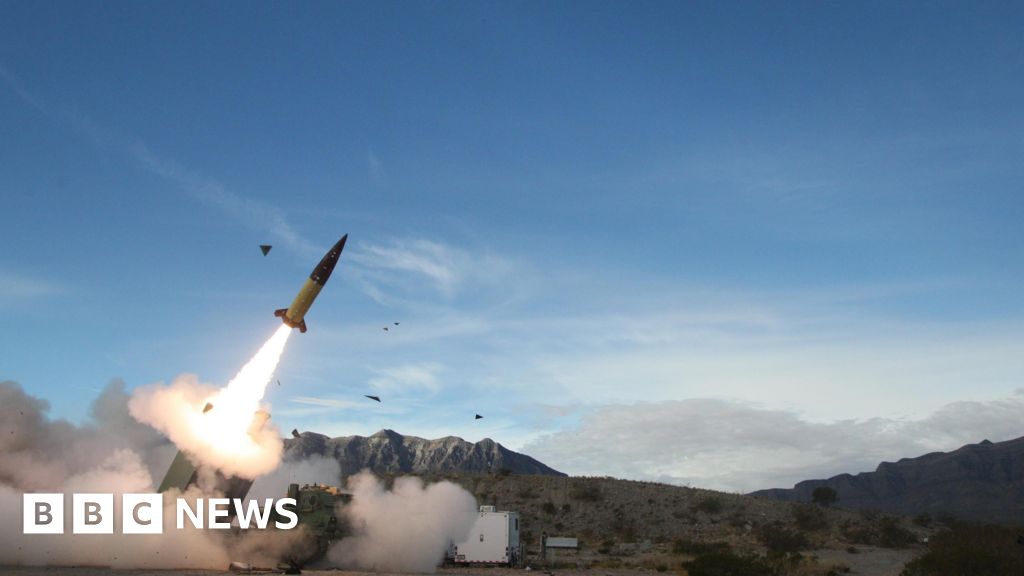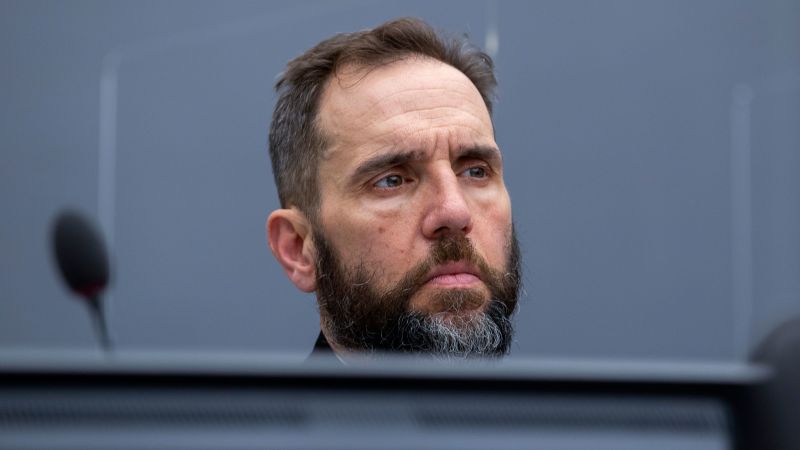Ukraine struck several targets deep inside Russia on Tuesday in what it says is its “most massive” attack of the war so far.
Ammunition depots and chemical plants were hit across several regions, some of which were hundreds of kilometres from the border, according to the General Staff of Ukraine’s Armed Forces.
Sources in Ukraine’s SBU intelligence agency told the BBC the overnight attack was a “painful blow” to Russia’s ability to wage war.
Russia said it had shot down US-supplied Atacms missiles as well as UK-made Storm Shadow cruise missiles, and vowed to respond to the attack.
At least nine airports in central and western Russia temporarily halted traffic, while the strikes prompted schools in the southwestern Saratov region to close.
Strikes in the border region of Bryansk caused explosions at a refinery, ammunition depots and a chemical plant said to produce gunpowder and explosives, a Ukrainian security source told the BBC.
But Kyiv also struck far deeper into the country, with the General Staff claiming to have hit targets up to 1,100km (700 miles) from the border.
In the western region of Saratov, officials reported a “massive” drone attack.
Two industrial plants in the cities of Engels and Saratov were damaged, regional governor Roman Busargin wrote on Telegram.
Students were taught online on Tuesday after local schools were closed.
Last week, Kyiv said it had struck an oil storage facility in Engels – prompting a days-long effort to tackle the blaze and Busargin to declare a state of emergency.
Officials in the western region of Tula also reported an overnight attack, where regional governor Dmitry Milyaev Russian said air defences had shot down 16 drones.
There were no casualties, he said, although falling debris had damaged some cars and buildings.
Elsewhere, a gas storage site near Kazan was struck in a drone attack in the southwestern region of Tatarstan, local officials said, without reporting any casualties.
Ukraine said Russia also launched dozens of drones across Ukraine overnight, with multiple air raid alerts in and around Kyiv.
According to its tally, all but one were shot down or lost.
Some were dummy, or decoy, drones – used to try to overwhelm air defences.
As air raid alarms sounded over Kyiv last night, one drone flew back and forth for some time, its movement tracked on various Telegram groups.
One user joked that it had been a “great idea” to send troops from the air force – who operate the air defence systems – to the front line as infantry.
Today, the Ukrainska Pravda newspaper quoted a source saying more than 5,000 troops were to be transferred from air to ground forces, following an order by General Oleksandr Syrskyi.
The acting commander of the Air Force responded by insisting that specialists “who are objectively difficult to replace” would not be moved, especially those trained on foreign-supplied weaponry and equipment. That presumably includes F16 planes and Patriot air defence systems.
The General Staff also commented, conceding that the situation on the frontline “is not easy” with a shortage of infantry “in many areas.”
“The decision to strengthen the ground brigades on the front line at the expense of servicemen from units of other types and branches of the Armed Forces of Ukraine is a forced step of the military leadership to strengthen our defence,” a statement read.
It was, Ukraine says, a fiery night.
Videos posted online seem to confirm at least some of the claims – although Russia’s defence ministry says US- and British-made missiles were shot down over Bryansk and the Black Sea.
The BBC asked Ukraine’s General Staff to comment on Russian claims that they shot down 14 of these Western-made missiles overnight.
A spokesman, Bohdan Senyk, said his office had “no knowledge of the information you are asking about”.
Ukraine is trying to push back, however it can, against Russian military advances on the ground, with a week to go until President-elect Donald Trump’s inauguration.
The authorities in Kyiv have come under pressure from the US administration to lower the conscription age and enable it to send more soldiers to the frontlines.
Trump’s national security adviser Mike Waltz recently told ABC News that Ukraine should address its shortage of troops and needed to be “all in for democracy” if it wants the US to be “all in” for Ukraine.
They were stark words, given the immense price Ukraine has already paid to defend itself and Nato’s eastern flank, and they seemed to herald a change of tone from Washington as Trump returns to the White House.
On Tuesday in Kyiv, Zelensky said again that there was no point lowering the age of conscription from 25 to 18 when those Ukrainian troops already deployed are short on weapons.
“We have more than 100 brigades on the battlefield, and each of them requires daily replenishment and equipment,” Zelensky said.
Kyiv often claims its allies are slow to send the weapons it has promised, including air defence systems and missiles.
Trump has said he is preparing to meet Vladimir Putin upon his return to the White House – and to make ending the war in Ukraine a priority.
He has not made clear how he plans to do that.
Note:- (Not all news on the site expresses the point of view of the site, but we transmit this news automatically and translate it through programmatic technology on the site and not from a human editor. The content is auto-generated from a syndicated feed.))



